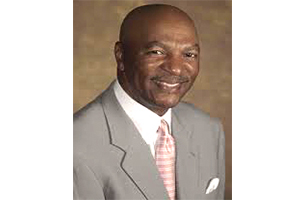It seems our paths were destined to cross.
Both born in the Tar Heel (N.C) state. Both lured to the caddie lot as baby-faced youths with rusty knees partially hidden by “holy’’ hand-me-down khakis. Both chased something somewhere beyond our current circumstance.
I won’t pretend that my star rose nearly as high as that of Dr. Charles Sifford, who is among a host of folk from all walks being awarded the Presidential Medal of Freedom by President Barack Obama on Nov. 24th. However, I sure am glad our careers intersected several times during the years and that he continues to receive his flowers while able to smell them.
I recall being enthralled by the graybeards at Biltmore Forest Country Club’s caddie lot as they spun tales of golfers who looked like me dominating the chittlin’ circuit—the black golf tours du jour. Players like Teddy Rhodes, Pete Brown and Lee Elder, who won so many times on the United Golfers Association tour in the 1960s he needed multiple trophy cases to accommodate all the hardware.
Of course, they also heralded the exploits of hometown hero and BFCC mainstay John Brooks Dendy, a former legend on the links then-serving as locker-room supervisor at the private club. He once shot 59 in an exhibition in Jacksonville, Fl., recording a 1-2-3-4 start to his round, the feat landing him in Ripley’s Believe It Or Not.
When they talked about Charlie Sifford, though, there was a level of pride in their stories that elevated the former caddie to near deity status.
I had witnessed a similar reverence when Daddy and Uncle A.J. (Pop) Webb talked about Jackie Robinson. I guess all gate-crashers and barrier-breakers endear themselves most to those directly affected by the struggle. Daddy and Pop both loved America’s pastime. Both of them played the game as amateurs and/or barnstorming wannabes. And, just as Robinson had broken the color barrier in professional baseball, Charlie had done the same in professional golf.
Of course, I was too young (11 years old) at the time to understand the historical significance of Charlie’s accomplishment. Dr. Martin Luther King was leading freedom marchers in the civil rights movement. I understood that.
As the first black man with an approved player’s card on the PGA Tour, Charlie was quietly waging war against Jim Crow, segregation and the game’s exclusive practices that I knew absolutely nothing about.
But I would eventually discover why the caddies revered Charlie Sifford.
The first time our paths crossed was in 1993, my rookie year as a senior writer at Golf World Magazine. Charlie was still competitive albeit as a “super’’ senior on the Senior PGA Tour in a limited number of events.
His perseverance intrigued me.
One day, a copy of his autobiography “Just Let Me Play’’ mysteriously appeared on my desk. I was so captivated by his story that I read it cover-to-cover twice in 72 hours.
I never discovered who contributed the book, but I am eternally grateful. What a revelation.
Several years later, while tracking Tiger Woods on the PGA Tour, I came upon an elderly gentleman chomping on a cigar while sitting in a golf cart at the Texas Open. It was Charlie Sifford.
He was a sad and understandably bitter old man decrying his current circumstance. At 70-plus years old, Charlie had become an unwanted man. Tournament sponsors had put the brakes on extending him any exemptions even in super senior events.
While I had a captive audience, I decided to interview Charlie. His words dripped with melancholy as he described being turned away by authorities at the same tournament nearly four decades earlier.
My heart sank and my blood pressure rose as Charlie described the huge Texas Ranger brandishing an equally big .45 caliber pistol as he blocked the tournament entrance.
Charlie wasn’t just a pathetic old man refusing to read the tea leaves of time that tell us all to go home and stay there. On the contrary, Charlie Sifford was a trailblazer seeking well-deserved relevance until he was ready to ride off into the sunset on his own terms.
I came to know the feeling. Empathy becomes a common denominator the deeper one gets into the back nine.
During the years, our paths crossed every time this genuine hero had another honor bestowed upon him. In 2004, when Charlie became the first (and only) African American inducted into the World Golf Hall of Fame, I shook his hand and patted his back in a sincere well done.
I traveled to St. Andrews, Scotland to speak on his behalf and attend the ceremony when the ex-caddie became Dr. Charles Sifford, the recipient of an honorary doctorate of laws degree from the University of St. Andrews.
“Call me Doctor Sifford,’’ he proudly proclaimed.
His nickname for me is “Peter Gun.’’ I believe it was a TV show back in the ‘50s or ‘60s. I cherish the monicker.
I was blessed and honored to have introduced Dr. Sifford for induction into the Southern California Golf Association Hall of Fame. We both shed a tear of happiness.
I won’t detail Charlie’s incredible journey in this space. Read his book or, if you want the shortened version, read my book “Uneven Lies: The Heroic Story of African Americans in Golf.’’ Suffice it to say, his journey has made it possible for mine in the game of golf and every other person of color who took a similar route.
For that, I’m extremely grateful. I’m also thankful that a young black man named Wendell Haskins had the foresight and fortitude to spearhead this latest honor. Wendell is senior director for diversity at the PGA of America. He is also a very good friend of mine.
Thank you Wendell for paying homage to our hero. And thank you Dr. Charles Sifford for opening the door. Congratulations my old friend.
Thank God our paths crossed.


